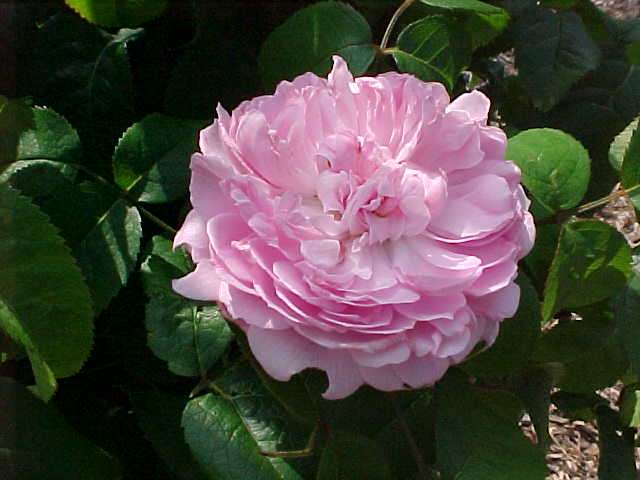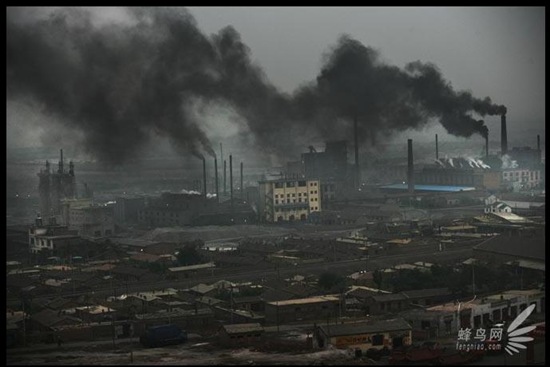Post by marchesarosa on Jan 27, 2010 17:39:27 GMT
This article discusses soot produced by the incomplete combustion of fossil fuels as a contributor to temperature rise. Unlike the mystical CO2 in the atmosphere soot has a KNOWN and quantifiable effect.
The Importance Of Soot In The Climate System
I have posted a number of times on the role of soot as a first order climate forcing (e. g. see) as well as published papers on this topic (e.g. see). Soot (black carbon) results from industrial and biomass burning and alters regional diabatic heating of the atmosphere when it is suspended in the air and when it changes the surface albedo when it deposits at the surface (particularly over snow and ice). It is a first order climate forcing that not only affects the global average radiative forcing, but regional climate forcings which have a direct effect on atmospheric and ocean circulation patterns.
TokyoTom has alerted us to an article by Graham Cogley that appeared at Enviromentalresearchweb blog which summarizes some of the recent research on this topic. It is titled
Soot and glaciers
and reads
“A little soot can make a big difference to the brightness of snow. Freshly fallen snow, when clean, is one of the brightest of substances, reflecting well over 90% of incident sunlight and presenting the risk of snow blindness to ill equipped travellers on glaciers.
As the snow ages, the snowflakes collapse and become rounded. Opportunities for photons to bounce off and head back into the sky become fewer. Opportunities for absorption become more frequent because the photons spend more of their time passing through grain interiors. Eventually, as the snow turns into glacier ice, the reflected fraction of incoming radiation drops to as low as one half or less.
There is more than this to the radiative physics of snow and ice. For example the wavelength of the impinging photon makes a difference, and so does the angle at which it strikes the surface (more reflection when the angle is closer to horizontal). When a thaw begins, some of the snow turns into liquid water, which, ironically, is one of the darkest of substances. So wet snow is not particularly bright. Dirt also makes a difference.
If the dirt is black enough then even a small amount reduces significantly the brightness, or albedo, of the snow. This was shown dramatically as long as 30 years ago by Warren and Wiscombe. The more soot, the more darkening, but as little as a few parts per billion by weight reduces the albedo of pure snow (that is, collections of grains of ice) by a few per cent in the visible part of the spectrum. We also get significant sunlight in the (invisible) near-infrared, but the effect of soot is much reduced there because ice is itself very dark in the near-infrared. All the same, soot makes a difference.
Photon for photon, exposed glacier ice yields two or more times as much melt water than clean snow, assuming both are at the melting point. So, we are very interested in anything, such as soot, that reduces the radiative contrast between the ice and the overlying snow. What with industrialization, growth of the human population and more intense clearance of forests by burning, there is more soot about now than there used to be. How much of it actually reaches the glaciers, and precisely how large its contribution is to the faster rates of mass loss observed in recent decades, remain open questions. But it would be surprising if we were to look for evidence of a link and failed to find it.
Evidence of a link is just what Xu Baiqing and colleagues, writing in a recent issue of the Proceedings of the National Academy of Sciences, appear to have found. They measured soot concentrations in ice cores from five Tibetan glaciers, and found radiatively significant amounts in all but one, with evidence for recent increases in at least two. These glaciers are downwind of two of the world’s largest sources of airborne soot, India and western Europe. (Yes, Tibet is a long way from Europe, but the soot particles are tiny and once they are aloft they can travel thousands of kilometres before being washed out.)
And at the recent Fall Meeting of the American Geophysical Union, Bill Lau of NASA drew attention to another way in which soot can affect glacier mass balance. While the soot is still in the atmosphere it constitutes what he calls an “elevated heat pump”. It heats the air (rather than the surface), the heated air rises, and new air is drawn in from elsewhere to replace it. In the Himalayan-Tibetan region, the new air comes from the south and is warm and moist, so this amounts to an induced intensification of the summer monsoon. Warmer air means more melting, but moister air means more precipitation and therefore, where the temperature is right, more snowfall. Working out the net impact on the glaciers, then, will be a challenge.
These studies leave us a long way from nailing down soot as one of the reasons for more negative glacier mass balance, which will require concurrent measurements of sootfall, incident radiation, temperature and rates of snowfall and melting. But at the very least, the soot concentration measurements show that the soot is there, and the most solid part of the deductive chain – the fact that soot makes snow absorb more radiation – is already firmly in place. Greenhouse gas is not the only pollutant we should be worrying about.”
pielkeclimatesci.wordpress.com/
The Importance Of Soot In The Climate System
I have posted a number of times on the role of soot as a first order climate forcing (e. g. see) as well as published papers on this topic (e.g. see). Soot (black carbon) results from industrial and biomass burning and alters regional diabatic heating of the atmosphere when it is suspended in the air and when it changes the surface albedo when it deposits at the surface (particularly over snow and ice). It is a first order climate forcing that not only affects the global average radiative forcing, but regional climate forcings which have a direct effect on atmospheric and ocean circulation patterns.
TokyoTom has alerted us to an article by Graham Cogley that appeared at Enviromentalresearchweb blog which summarizes some of the recent research on this topic. It is titled
Soot and glaciers
and reads
“A little soot can make a big difference to the brightness of snow. Freshly fallen snow, when clean, is one of the brightest of substances, reflecting well over 90% of incident sunlight and presenting the risk of snow blindness to ill equipped travellers on glaciers.
As the snow ages, the snowflakes collapse and become rounded. Opportunities for photons to bounce off and head back into the sky become fewer. Opportunities for absorption become more frequent because the photons spend more of their time passing through grain interiors. Eventually, as the snow turns into glacier ice, the reflected fraction of incoming radiation drops to as low as one half or less.
There is more than this to the radiative physics of snow and ice. For example the wavelength of the impinging photon makes a difference, and so does the angle at which it strikes the surface (more reflection when the angle is closer to horizontal). When a thaw begins, some of the snow turns into liquid water, which, ironically, is one of the darkest of substances. So wet snow is not particularly bright. Dirt also makes a difference.
If the dirt is black enough then even a small amount reduces significantly the brightness, or albedo, of the snow. This was shown dramatically as long as 30 years ago by Warren and Wiscombe. The more soot, the more darkening, but as little as a few parts per billion by weight reduces the albedo of pure snow (that is, collections of grains of ice) by a few per cent in the visible part of the spectrum. We also get significant sunlight in the (invisible) near-infrared, but the effect of soot is much reduced there because ice is itself very dark in the near-infrared. All the same, soot makes a difference.
Photon for photon, exposed glacier ice yields two or more times as much melt water than clean snow, assuming both are at the melting point. So, we are very interested in anything, such as soot, that reduces the radiative contrast between the ice and the overlying snow. What with industrialization, growth of the human population and more intense clearance of forests by burning, there is more soot about now than there used to be. How much of it actually reaches the glaciers, and precisely how large its contribution is to the faster rates of mass loss observed in recent decades, remain open questions. But it would be surprising if we were to look for evidence of a link and failed to find it.
Evidence of a link is just what Xu Baiqing and colleagues, writing in a recent issue of the Proceedings of the National Academy of Sciences, appear to have found. They measured soot concentrations in ice cores from five Tibetan glaciers, and found radiatively significant amounts in all but one, with evidence for recent increases in at least two. These glaciers are downwind of two of the world’s largest sources of airborne soot, India and western Europe. (Yes, Tibet is a long way from Europe, but the soot particles are tiny and once they are aloft they can travel thousands of kilometres before being washed out.)
And at the recent Fall Meeting of the American Geophysical Union, Bill Lau of NASA drew attention to another way in which soot can affect glacier mass balance. While the soot is still in the atmosphere it constitutes what he calls an “elevated heat pump”. It heats the air (rather than the surface), the heated air rises, and new air is drawn in from elsewhere to replace it. In the Himalayan-Tibetan region, the new air comes from the south and is warm and moist, so this amounts to an induced intensification of the summer monsoon. Warmer air means more melting, but moister air means more precipitation and therefore, where the temperature is right, more snowfall. Working out the net impact on the glaciers, then, will be a challenge.
These studies leave us a long way from nailing down soot as one of the reasons for more negative glacier mass balance, which will require concurrent measurements of sootfall, incident radiation, temperature and rates of snowfall and melting. But at the very least, the soot concentration measurements show that the soot is there, and the most solid part of the deductive chain – the fact that soot makes snow absorb more radiation – is already firmly in place. Greenhouse gas is not the only pollutant we should be worrying about.”
pielkeclimatesci.wordpress.com/


